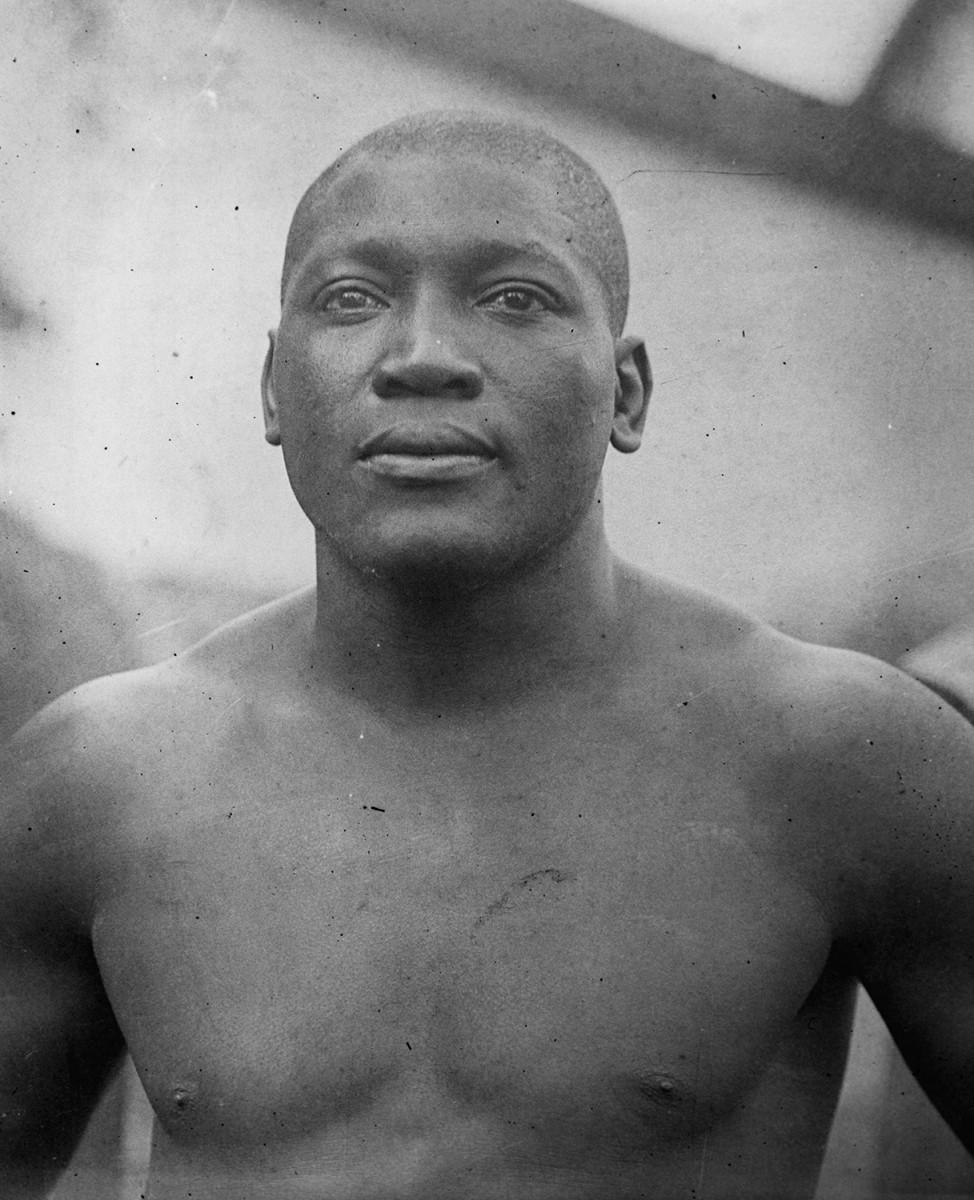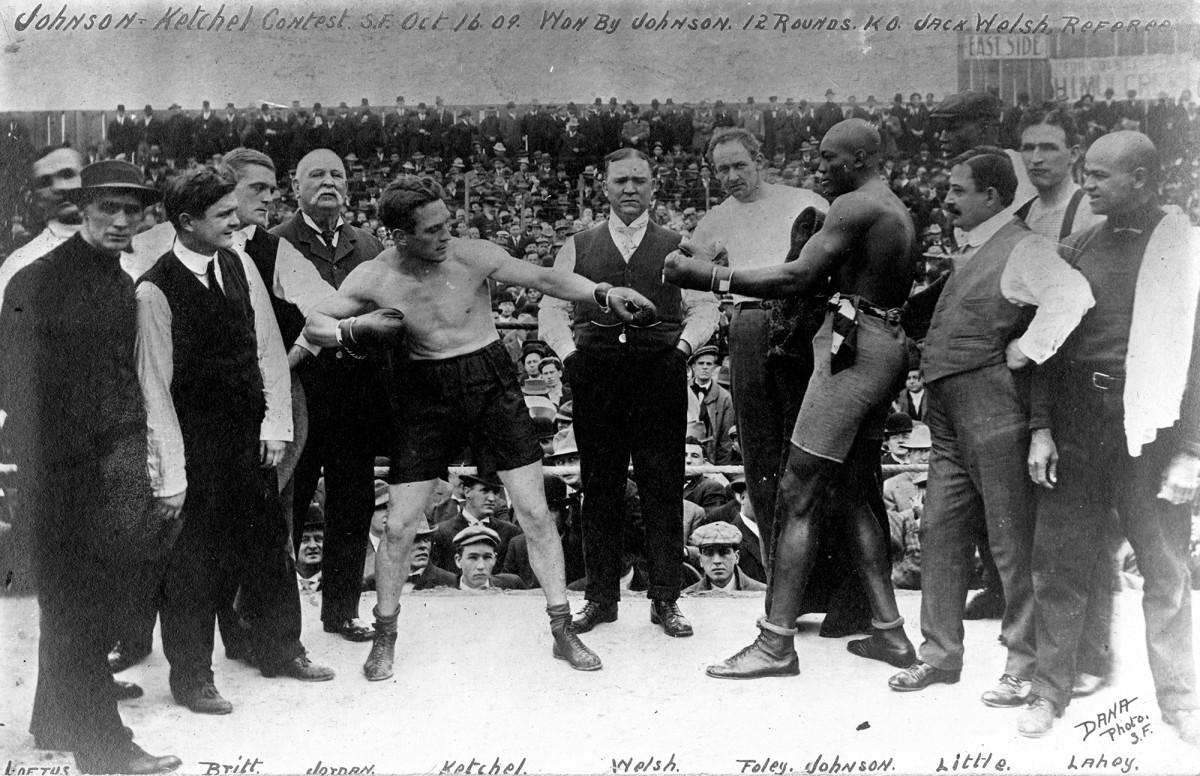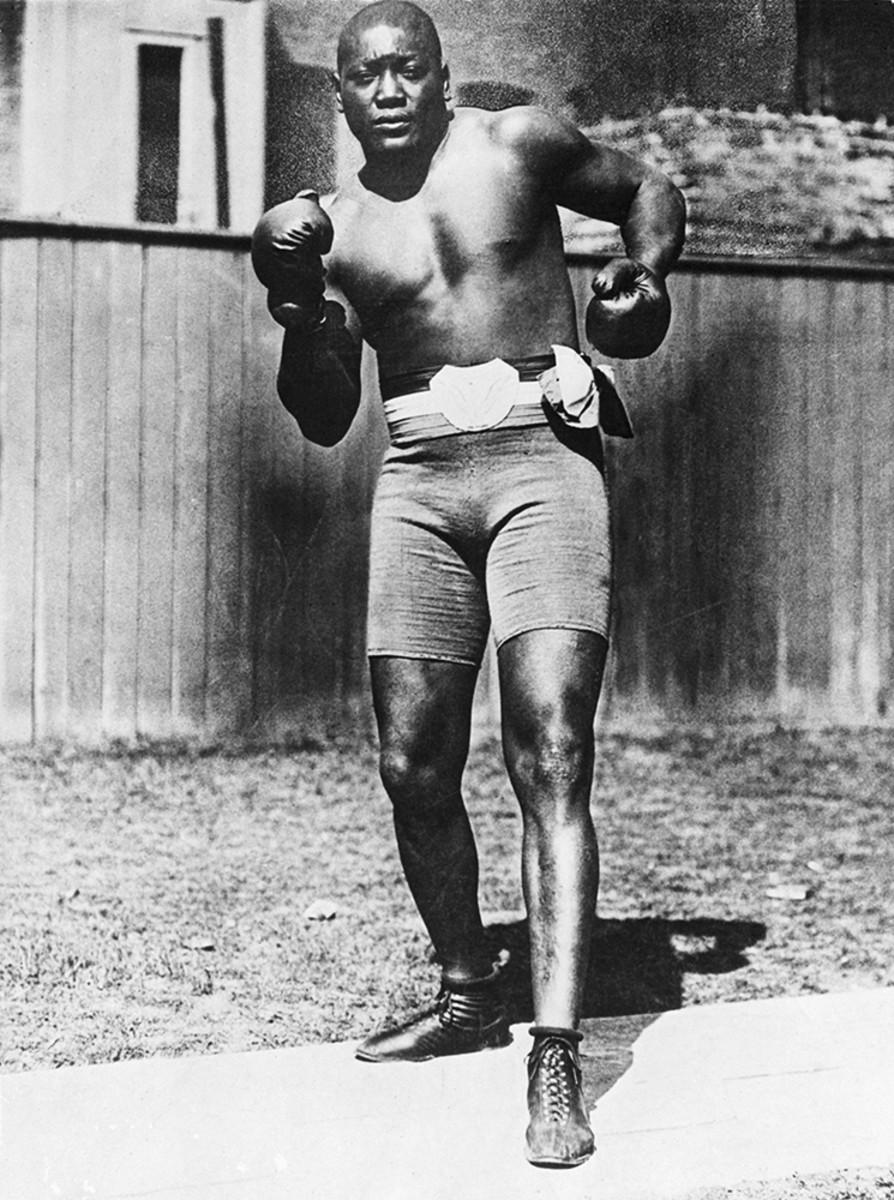Remembering Jack Johnson, the First Black Heavyweight Boxing Champion
In his heyday as heavyweight champion, which began in 1908 and ended in 1915, it wasn’t enough for promoters to find opponents for Jack Johnson. They needed white ones. The search for the “Great White Hope,” a movement started by noted author Jack London, who found Johnson’s position as heavyweight champ insufferable, began in 1910, with Jim Jeffries, the first of a string of white challengers to challenge Johnson for his title. It wasn’t until 1915, when Jess Willard, in the 26th round of a scheduled 45-round fight, that one finally succeeded.

Born in Galveston, Texas, the son of former slaves, Johnson was a dock worker in his teenage years. He left home at 16, making it as far as New York, surviving by working as a janitor or stable boy. A shop owner in Dallas introduced Johnson to boxing in the late 1800s—like many things of that era, details are sketchy—and Johnson took to it. Blessed with superior size (a shade over 6 feet, in the neighborhood of 220 pounds) and cat-like reflexes, Johnson was a natural. After a couple of years of beating up locals, Johnson moved to Chicago, where he linked up with a local promoter. In 1899, Johnson took his first defeat, a knockout loss to Klondike Haynes. A year later he stopped Haynes in Memphis, a win that established Johnson as a contender—and earned him his first $1,000 purse. In 1901, back in Galveston, Johnson lost to Joe Choynski. Because prizefighting was illegal in Texas, both men were arrested. The two spent 23 days in jail together; locked up, Choynski spent that time teaching Johnson defensive technique.
By his own admission, Johnson’s early life wasn’t filled with racism. He grew up in Galveston’s racially mixed Twelfth Ward and was part of the 11th Street and Avenue K gang, a group that had white and Black members. In his adult years, he became intertwined with it. He rose through the boxing ranks quickly, winning the World Colored Heavyweight title in 1903, defeating top Black opponents like Hank Griffin and Joe Jeanette along the way.

Yet white opponents continued to dismiss him. Jeffries vacated the title in 1904, declaring he had defeated “logical” challengers. His successor, Marvin Hart, said he was ready to take on all comers—provided they had the right skin color. When Tommy Burns edged Hart for the title in 1906, he agreed to face Johnson, though only after Johnson stalked him at events all over the world. In 1908, the two met in Australia. The beating Johnson put on Burns was so thorough local police reportedly stopped the fight in the 14th round.
In 1910 public pressure pushed Jeffries out of retirement and into the ring with Johnson. The Battle of the Century, as it was billed, wasn’t one. Johnson, grinning through his famous gold-toothed smile, battered an out-of-shape Jeffries, stopping him in the 15th round. Afterward Jeffries declined to blame his conditioning. “On my best day,” Jeffries told a reporter, “I couldn’t have beaten Jack Johnson.”
Johnson faced deep racism before the fight—reports at the time suggested there were armed men in the crowd prepared to take out Johnson if Jeffries couldn’t—as he often did, though it paled in comparison to everyday life. In the Jim Crow South, Johnson was a target, hated by those offended by his lifestyle, especially with his relationships. He married three white women and was reported to have had affairs with other white women. One, Belle Schreiber, a known sex worker, traveled with Johnson on a trip from Pittsburgh to Chicago. In 1912, Johnson was arrested for violations of the Mann Act, a broadly worded law designed to combat the sex industry. He was the first person arrested for it, which was widely—and correctly—seen as racial injustice. Schreiber was the prosecution’s chief witness. During the trial, the prosecutor was asked to kill Johnson—and offered $100,000 by a Texas group as a contribution for his defense. Johnson was convicted by an all-white jury and sentenced to a year and a day in prison.

Refusing to accept the conviction, Johnson fled. He spent the next seven years globetrotting, living—and occasionally fighting—in Europe, South America and Mexico. However, the outbreak of World War I and Johnson’s status as a fugitive severely limited his earning power. In 1915 he traveled to Cuba to face Willard, losing the fight—and his title. In 1920 he surrendered himself to U.S. officials and was shipped to Leavenworth Federal Prison. He reportedly fought five times in prison, including twice in one day.
Johnson died in a car crash in 1946. Reckless driving was a lifelong weakness, a cause of five crashes before the fatal one. As a fighter, Johnson, officially 54-11-9, with a professional career that began in Galveston and concluded 33 years later in Wichita, Kansas, was among the greats, the greatest according to Nat Fleischer, founder of The Ring magazine. His legacy, though, is so much more. He faced down fighters and the federal government and never backed down from either. He once gave a speech to a klavern of the Ku Klux Klan. He was posthumously pardoned by then President Donald Trump in 2018, a historical correction Johnson undoubtedly would have appreciated. As Johnson told one journalist later in life, “When you write about me, remember that I was a man. And a good one.”
